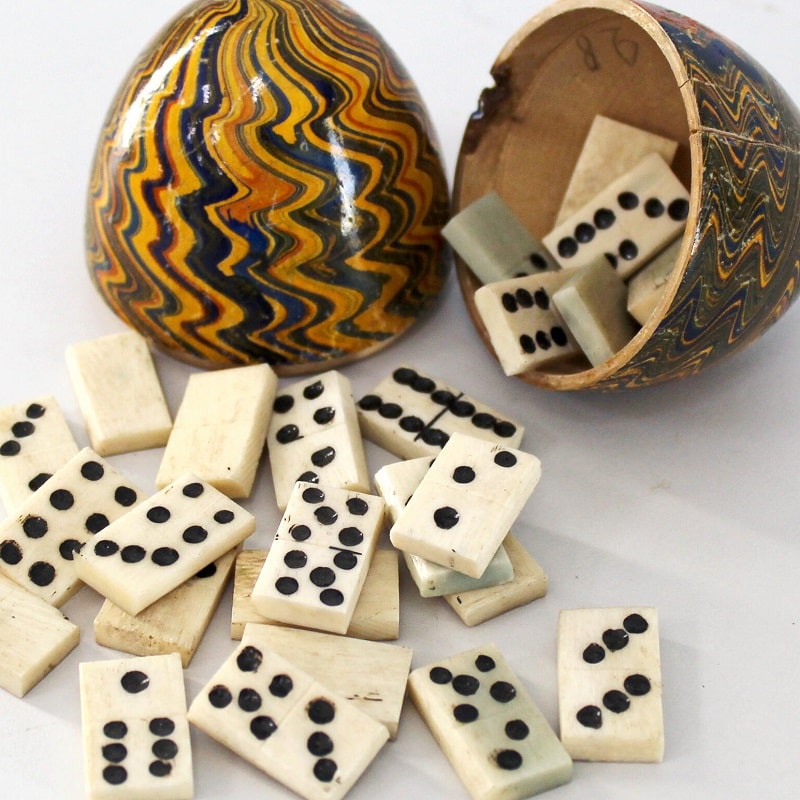Dominoes are a popular board game with a unique history. The main task of a domino player is to form a chain from the tiles, taking into account the number of dots on each of them.
How did dominoes appear?
Historians believe that dominoes are a new form of dice. It first appeared in China in the 12th century. However, dominoes are thought to have originated in India. The faces of dice represent different variations of points, and there were no empty faces at the time (unlike today’s dice). Interestingly, the original use of knuckles was not for playing. They were used as an important divination tool, in various magical ceremonies. In Korea and India dominoes plate and to this day serve as a measure for predicting the future and the fate of man. Dominoes used by Indians and Koreans in divination have different colours. It is believed that this game is not just a way to spend your leisure time, but also a means to study the laws of life. Not in vain dominoes have only 7 numbers (from 0 to 6) painted on them. Dominoes represent macrocosm and seven life plans.
Dominoes – versions of its name
There are several versions of the origins of the game dominoes. One of them says that dominoes look back to XII century and was created by Dominicans. Plates in this game were white and dots on them were black. Such coloring repeats colour of clothes of Dominican monks, whose outerwear was presented by white cloaks with black hood.
Philologists have quite a different opinion on the origin of the dominoes. Experts believe that the term comes from France. This was the name of the French clergy cloak, which was dark on the outside, and light on the inside. The name “domino” is also associated with the carnival mask, widespread in France several centuries ago, which had a black and white colour.
Another belief is that dominoes have been coined by monks. This popular game takes its name from the first greeting word that monks usually use after church services begin: Dominus vobiscum (translates as ‘God be with you’).

Dominoes in Europe
Dominoes began to spread in Europe thanks to Marco Polo, who introduced the game from China. At that time, dominoes were already very popular with the Chinese. Along with growing popularity, the number of varieties of the game increased. In the world today there are more than 50 varieties of dominoes, while the names of some variations are very original. Judge for yourself: jumping gazelle, carnations in the fog, enter the pagoda, sea goat, etc.
The game of dominoes has become in demand among church ministers. Not surprisingly, its creation was attributed to priests. Legend has it that it was a clergyman named Domino who invented the game of dominoes.
The domino variation invented by Europeans is slightly different from the one popular in China. In Europe, this game was widely disseminated only in the 18th century. Such a long inaccessibility is often explained by the fact that the game was mainly enjoyed by monks-hermits. It is believed that thanks to Europeans first appeared on the dominoes “0”.
After a rapid rise in popularity among Europeans, the game of dominoes has expanded into new variations (bergen, matador, sausage, blitz). Also it became basis for occurrence of several varieties of card games (kribij, bingo, 42 and others).
Today, interest in dominoes remains high. The game is loved by many and retains its popularity around the world.

